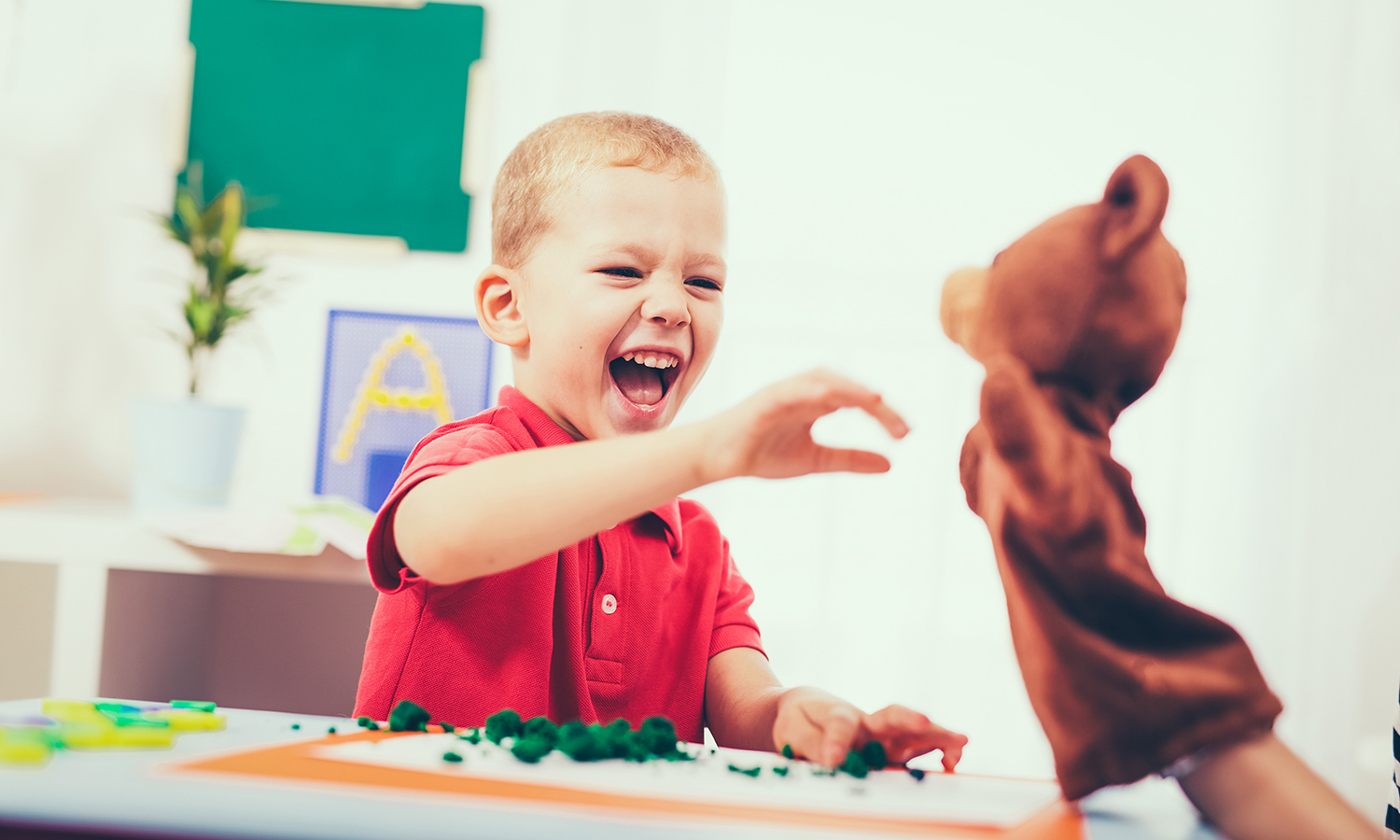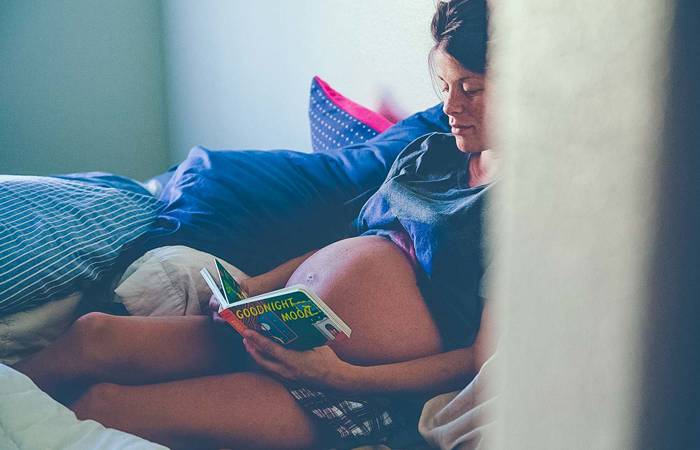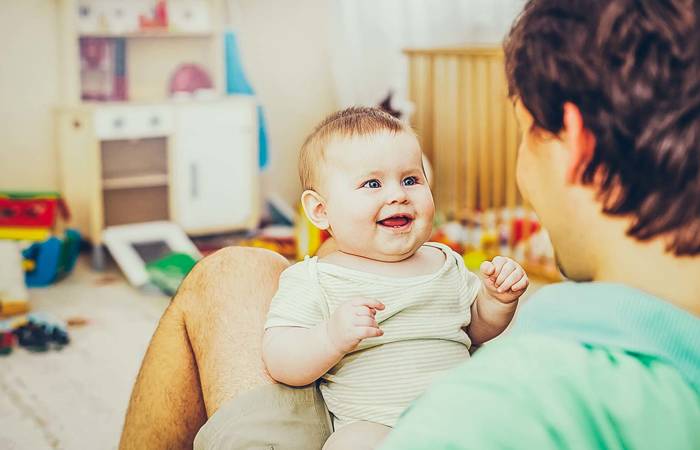Like what you see?
Sign up to receive more free parenting advice.
Thank you for subscribing to our newsletter!
Early Learning

Credit: iStock.com/Jovanmandic
Many parents and carers wait excitedly for their child’s first word, but we don’t always recognise that preparation for speech starts much earlier than those first recognisable sounds.
Development: Infants
“Everything from birth sets the stage for language development. As parents smile at and talk with babies, they are listening to the sounds that make up language, and start to imitate sounds that they hear,” says Kathryn Marrington, National Manager of Speech Pathology at Goodstart Early Learning.
“There is social communication too: tiny babies study their parents faces, learning facial expressions to gain meaning, they watch our mouth moving to see how sounds are made. All of that happens very early on.”
Development: 12 months
By the time children have turned one, they may have between two and six words, but they are simplified versions of the adult word.
“It might be ‘da’ for dog, or ‘ba’ for bottle. Although babies still may babble and enjoy playing with new and different sounds, by the time children turn one, these sounds are being used to convey meaning: their communication is much more intentional,” says Kathryn.
Our earliest words are made by combining voice with different jaw and lip movements – sounds like “b” or “m” sounds with a vowel added. (“Ba” for bottle is one example.) Coordinating the tongue comes later. Young babies start to combine sounds in a way that imitates the rhythm and tone of adult speech: often these noises may sound like a real question or exclamation.
But while early words always get plenty of attention, a one-year-old’s non-verbal skills are equally important.
“While words may still be emerging, babies communicate using gestures like pointing, or looking at an adult then back at what they want,” says Kathryn. It is therefore important for parents to be aware of, and respond to these other ways of communicating too.
A huge percentage of what we are saying is conveyed non-verbally so it’s important to focus on whether they are using their eyes and body to help to convey their meaning.Kathryn Marrington
Stay up to date with the latest news and articles from First Five Years
Thank you for subscribing to our newsletter!
Development: 15 months
A child’s understanding of language leaps forward at around 14 or 15 months of age. Now, they can usually follow simple, familiar instructions and may be able to say more, such as the names of their siblings or of other people they see regularly. At 18 months of age they will usually have around a 50-word vocabulary.
By two, social words become common, so expect to hear words like “bye”, “hi” and of course “no”, all accompanied by plenty of gesturing.
“If you’re concerned they aren’t attempting to try words, or can’t understand really basic instructions then this is good age to see a GP. Unfortunately, there’s still a ‘wait and see myth’ out there [among parents], but if there are any concerns by two we’d really like parents to check in,” says Kathryn.
Development: Two to three years
Between two and three, children begin to be able to sit for longer periods with books and stories. Their interest in other children also starts to develop, and they become more flexible and creative in the ways that they use language.
“Two to three-year-olds become more skilled at getting their message across. If someone doesn’t understand them because their speech sounds aren’t fully developed at this stage three-year-olds are able to say things in a different way to be able to be understood,” says Kathryn, noting that while a three-year-old will be able to tell a story, it will often entail enthusiastic embellishment of the facts.
Even as children’s verbal skills develop, non-verbal cues remain an integral part of the language development package.
“A huge percentage of what we are saying is conveyed non-verbally so it’s important to focus on whether they are using their eyes and body to help to convey their meaning.
“Some children can do that very skilfully, and by three all will be determined to get their message across in some way. If they are not, that’s where we are interested in exploring things further: there’s a big developmental continuum of what children are doing but we do want to see constant progress,” says Kathryn.
Development: Four years
By four, children’s understanding is developed enough for them to follow instructions with multiple steps such as, “Go upstairs, put your hat in your bag and then get your lunch from the bench”.
At this age, children are also much better at justifying why they don’t want to do something, as their use of language becomes more flexible. Still, not all speech is clear at four years. Typically, while 50 to 75 per cent of a two or three-year-old’s speech is understandable, at four this leaps to between 75 and 90 per cent.
“Not all sounds are fully formed so their speech still has some level of immature sounds. The important thing as a parent is to respond to the meaning, and not to correct them. Instead, repeat it back correctly to provide a model, so if they say, ‘I goed to the beach’ you can respond with, ‘Yes, you went to the beach’,” Kathryn says.
Kathryn advises parents also keep tabs on their child’s ability to hear.
“Be really aware of whether your child may have had some fluctuating hearing loss, particularly if they have had lots of ear infections. That can mean hearing can be muffled, and it can be worth getting them a hearing check. After all, if children can’t hear the subtle distinctions between speech sounds, they won’t be able to make those sounds accurately,” she says.
Overall, the most valuable thing parents can to do assist their child’s language development is to keep talking, reading and having fun ‘playing’ with language together through conversation.
“You can work towards having a conversation that goes back and forth until there are five turns taken even with the youngest of children,” says Kathryn.
A conversation provides an opportunity to ask questions, respond to their answers, make comments and react – remembering that conversational ‘turns’ may be a word, a sound, a facial expression or a gesture depending on the age and abilities of your child. All of these interactions add up to great opportunities for children’s communication development.
“We can get caught up as parents giving directions that move children through routines, or we may ask too many questions. It’s good to remember to balance questions with comments and engage in playful back and forth interactions that follow the child’s interests and imagination,” Kathryn says.
Finally, if things aren’t going the way you think they should, don’t panic, particularly if you are getting feedback from carers or teachers about your child’s speech development.
“It can’t hurt to make an appointment; it’s so important to not simply wait and see. Sometimes all it takes is a few sessions with a speech pathologist to help parents to adjust their interaction styles to promote language or to teach children how to adjust their speech sounds in fun and playful ways,” Kathryn says.







